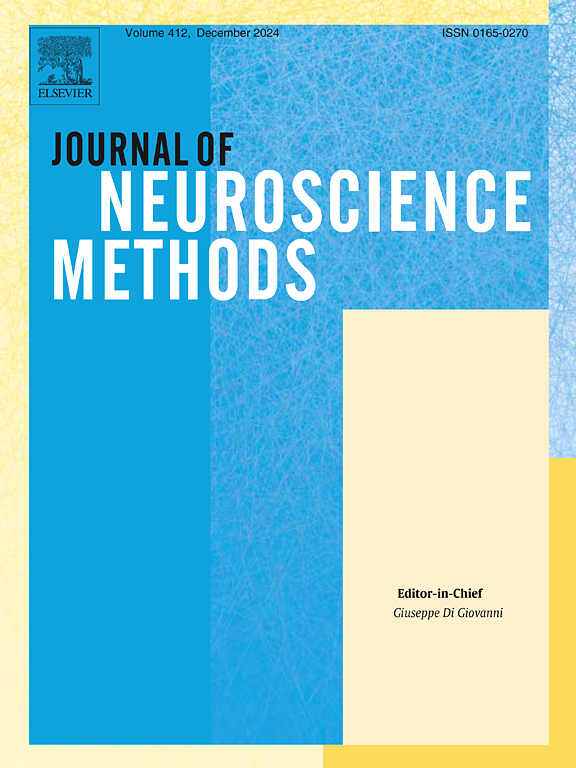使用混合现实头戴式设备来诱导和跟踪临床相关的运动。
IF 2.7
4区 医学
Q2 BIOCHEMICAL RESEARCH METHODS
引用次数: 0
摘要
背景:21世纪的神经学将需要可扩展和定量的工具,以改善远程医疗的神经学评估并扩大获得护理的机会。市售的混合现实耳机可以通过投影到现实世界的全息图同时呈现刺激,并对手部运动、眼球运动和发声进行客观和定量的测量。新方法:我们设计了6个模拟标准神经系统评估的任务,并通过微软HoloLens 2混合现实头戴式耳机将它们分配给单个参与者。这些任务评估了姿势性手震颤、手指敲击、手的旋前和旋后、中心任务的手和眼动追踪、随机运动任务的手和眼动追踪以及声音评估。结果:我们展示了HoloLens在常用的神经学检查中的效用。首先,我们证明了头戴式全息图可以在3D空间中投射手部运动和物体,提供了一种准确和可重复地呈现测试刺激的方法,以减少测试-测试可变性。其次,我们发现参与者的手部运动与基于记录运动数据计算的各种指标的全息刺激密切匹配。第三,我们展示了HoloLens可以记录和回放检查任务,用于视觉检查,与其他医疗提供者共享,以及未来分析。第四,我们展示了录音和分析可以用来描述声音特征随时间的变化。总之,这证明了混合现实耳机的多功能性和神经学评估的可能应用。结论:通过一个独立的和市售的混合现实头戴式设备来管理神经系统检查的组件有很多好处,包括详细的运动学量化,每次测试可重复的刺激呈现,并且可以自我管理,扩大了神经系统护理的范围,节省了医院的时间和金钱。本文章由计算机程序翻译,如有差异,请以英文原文为准。
Using a mixed-reality headset to elicit and track clinically relevant movement in the clinic
Background
21st century neurology will require scalable and quantitative tools that can improve neurologic evaluations over telehealth and expand access to care. Commercially available mixed-reality headsets allow for simultaneous presentation of stimuli via holograms projected into the real world and objective and quantitative measurement of hand movement, eye movement, and phonation.
New method
We created 6 tasks designed to mimic standard neurologic assessments and administered them to a single participant via the Microsoft HoloLens 2 mixed-reality headset. The tasks assessed postural hand tremor, finger tapping, pronation and supination of hands, hand and eye tracking of a center-out task, hand and eye tracking of a random motion task, and vocal assessment.
Results
We show the utility of the HoloLens for commonly used neurological exams. First, we demonstrate that headset-derived holograms can project hand movements and objects in 3D space, providing a method to accurately and reproducibly present test stimuli to reduce test-test variability. Second, we found that participant hand movements closely matched holographic stimuli using a variety of metrics calculated on recorded movement data. Third, we showed that the HoloLens can record and playback exam tasks for visual inspection, sharing with other medical providers, and future analysis. Fourth, we showed that vocal recordings and analysis could be used to profile vocal characteristics over time. Together, this demonstrates the versatility of mixed reality headsets and possible applications for neurological assessment.
Conclusions
Administering components of the neurologic exam via a self-contained and commercially available mixed-reality headset has numerous benefits including detailed kinematic quantification, reproducible stimuli presentation from test to test, and can be self-administered expanding access to neurological care and saving hospital time and money.
求助全文
通过发布文献求助,成功后即可免费获取论文全文。
去求助
来源期刊

Journal of Neuroscience Methods
医学-神经科学
CiteScore
7.10
自引率
3.30%
发文量
226
审稿时长
52 days
期刊介绍:
The Journal of Neuroscience Methods publishes papers that describe new methods that are specifically for neuroscience research conducted in invertebrates, vertebrates or in man. Major methodological improvements or important refinements of established neuroscience methods are also considered for publication. The Journal''s Scope includes all aspects of contemporary neuroscience research, including anatomical, behavioural, biochemical, cellular, computational, molecular, invasive and non-invasive imaging, optogenetic, and physiological research investigations.
 求助内容:
求助内容: 应助结果提醒方式:
应助结果提醒方式:


